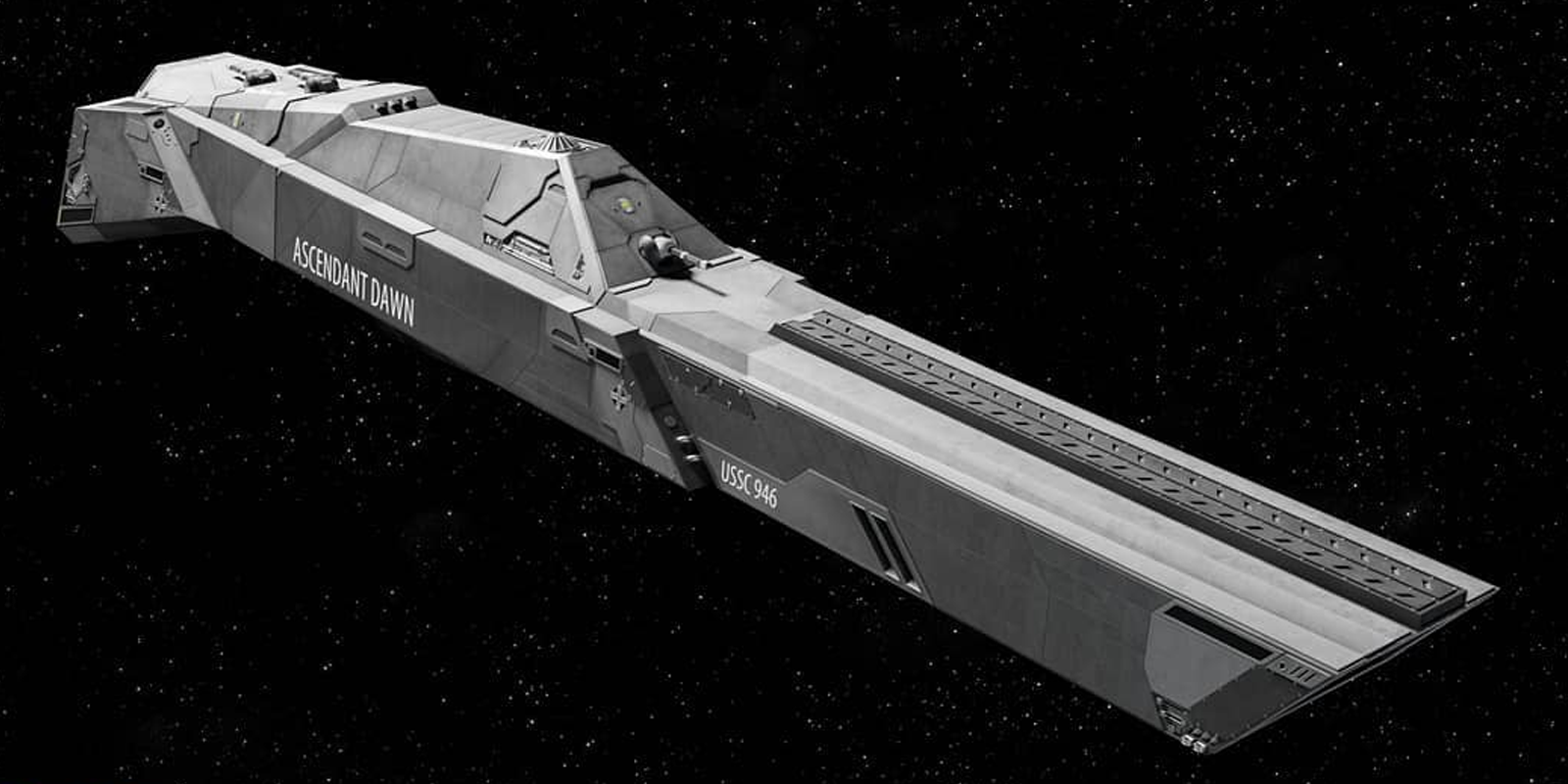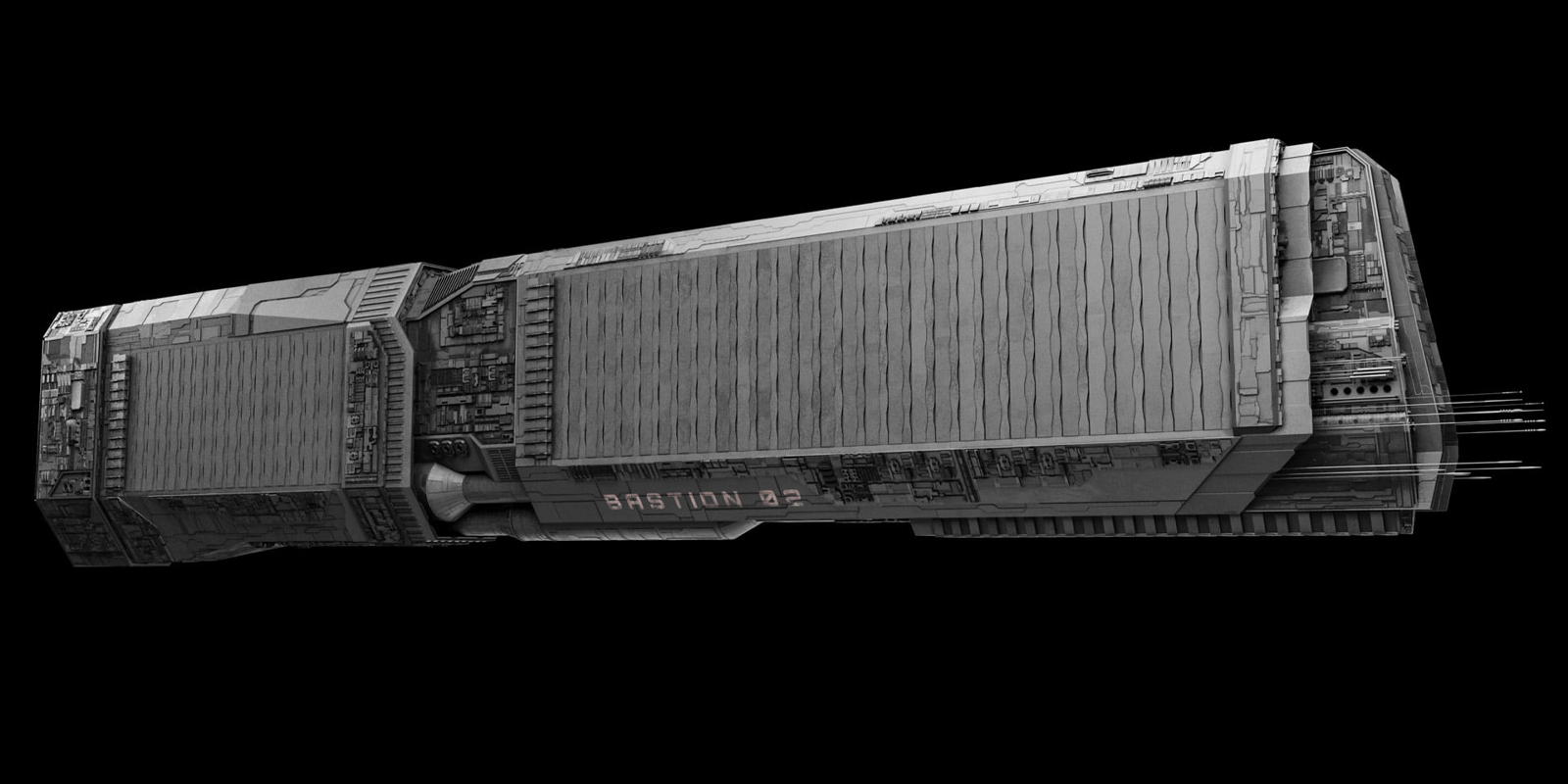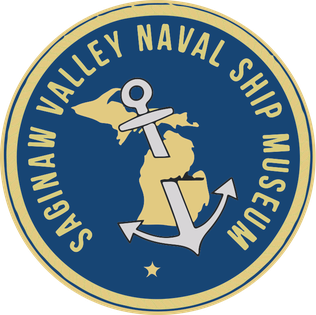The Outbound Hope Mission
By 2215, nearly 400 scientific trips had been logged through the Bifröst Station. Each time, starships – manned and unmanned, large and small – were able to successfully transport themselves thousands of light years instantaneously and without incident.
The sole exception to this was the disastrous Outbound Discovery mission, which continued to baffle experts on the ring and its mysterious technologies. After fifty years of attempting to find answers, most had concluded that the fleet’s loss had been “an unfortunate accident.” Many hypothesized the fleet had somehow collided with a passing object – a deadly but ultimately benign and natural explanation. Those that feared something more sinister were generally regarded as conspiracy theorists and laughed out of any reputable stake in the discourse.
THE NEW OUTBOUND DEAL
That same year, a multi-partisan political movement to rekindle colonial attempts in 354-PA began to gain overwhelming support. Populist factions praised the idea as a grand creator of jobs and savior of a weakened economy. Conservative groups – still directed primarily through the weakened influence of Windfall Starship Systems – sought to maintain the corporation’s hold on both politics and economics. In the end, both sides agreed to a “New Outbound Deal” that allocated trillions of dollars to a new colonial effort.
By the autumn of 2215, Windfall engineers had been green-lit to begin the construction of a new colonial fleet. Yet there was one important caveat: Unlike the purely-civilian Outbound Discovery Mission, this new endeavor had to include a military presence. The reasons for this were numerous; Some worried a civilian fleet lacked the necessary discipline for survival, while others insisted it brought a much-needed sense of national pride. In truth, many still feared the uncertainty of Discovery’s fate, and looked to a military presence for a sense of protection and peace-of-mind.
With the blessing of the US Congress, state-of-the-art warships began to be drawn up alongside unique and innovative civilian models. The new fleet was intended to be the greatest feat of engineering to ever leave American docks.
The reality was far less glamorous. From the beginning, the new fleet’s construction was plagued by severe budget shortfalls. Most of these stemmed from the intense political rivalries in congress that threatened to abort the entire project. Many ingenious but expensive ship designs were ultimately shelved. Monies that did trickle in were earmarked for the construction of new essential vessels such as agricultural ships, foundries, and water tankers.
While the decision to commit military vessels into the fleet remained on the table, funds to create new warships specific to the mission were completely withdrawn within months of greenlighting the project. The new fleet would have to repurpose existing warships for the effort.

THE DAWN LEADS AGAIN
After much debate, the decision was made to re-purpose the Roosevelt-Class destroyer USSC-946 Ascendant Dawn as the fleet’s official flagship. Decommissioned as a museum ship just two years prior, the Dawn was widely seen as a symbol of national pride and military success. Following its role in the Solar War, the ship had often been compared to the USS Constitution, still displayed in Old Boston.
“She’s always served the American People.
And now, she’ll be proud to serve us again…”
PRESIDENT ELLIOTT WAGNER – Speaking at the Ascendant Dawn‘s Recommissioning Ceremony (July 2219)
The Dawn’s role within American History had been undeniable, and its use in the next chapter of the American story was hailed as patriotic and inspirational. Plans were made to use the Dawn ’s existing museum facilities as the foundation of a new generation of patriotism and respect for the American military in 354-PA.
Along with two other Roosevelt-Class destroyers — the Freedom’s Cry and the Flame of Liberty — the new fleet would be able to intercept and respond to crises, though not to the extent that leaders had hoped. Each of the destroyers was refitted with new technologies and armor plating, though budgeting remained a continual concern. As the seat of both the fleet’s military admiral and the civilian governor, additional living spaces were allocated to the Ascendant Dawn.
THE OUTBOUND HOPE MISSION
In 2218, a newly-elected congress began to push new funds in the direction of colonial efforts. Two Lincoln-Class Cruisers, previously scheduled for decommissioning, were repurposed to join the Roosevelts in protecting the fleet. Six Osprey-Class gunships were simultaneously purchased from Windfall shipyards and would serve as the only new military ships of the fleet.
The biggest allocation of new funds was intended for the return of an ingenious but expensive starship design from those that had been discarded. The Bastion-II was a reworking of a massive civilian base ship originally utilized by the Outbound Discovery mission decades before. While able to be flown with minimal crew members through the Bifröst, the nearly-two-kilometer vessel could then rotate itself and land on a planetary surface. Once properly anchored, the new structure would serve as a towering skyscraper and the focal point of the new colony’s administration and terraforming efforts. Costs were minimized by reducing life support and gravitational systems for much of the ship’s residential spaces, leaving colonists and DCA officials to traverse the voyage aboard civilian passenger liners.

By the summer of 2219, the fleet was completed. With eleven military vessels, sixty civilian ships, and the ability to support 30,000 military and civilian colonists, the armada was cleared to depart that November.
With representation from the Department of Colonial Affairs, the USSC, the Martian Collective and several other international groups, the new mission promised a new beginning for the United States and humanity as a whole. Remembering the loss of the Discovery, leaders christened the new endeavor as the Outbound Hope Mission and looked forward to its future success.
The Outbound Hope Mission was destined to succeed among the stars.



